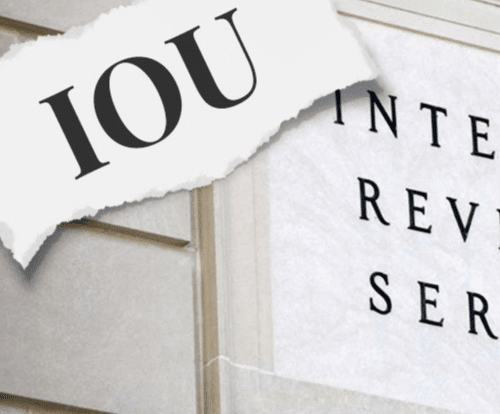TAX STRATEGIES FOR RETIREMENT: BUCKETS CREATE TAX CHOICES

Federal Appeals Court Judge Billings Learned Hand was a judge and judicial philosopher who aptly proclaimed,
“There are two systems of taxation in our country: one for the informed and one for the uninformed.”
In our work as CPAs and CFP™ professionals, we would agree that this is undeniably true. The difference in lifetime tax liability between those who develop strategic retirement tax plans and those who don’t is stark.
THE IMPORTANCE OF TAX PLANNING IN RETIREMENT
Retirees are affected to differing extents by a variety of taxes, including state income taxes, estate taxes, and Social Security. However, all retirees must deal with federal income taxes. When planning retirement income strategies, tax mitigation and tax efficiency are very important. In general, the more taxes you are required to pay in retirement, the more income you’ll need to generate in order to pay those taxes and live comfortably.
We often hear about diversification when it comes to asset classes, but it goes further than that. Different investments have different tax characteristics. When developing your financial plan for retirement, diversifying the kind of investments you have can optimize your tax results. If all of your retirement assets are in qualified plans, you may incur significant tax liability on distributions. Tax diversification is the strategy of spreading your assets across a variety of investment types that have different tax treatments. We like to think of these different kinds of investments as buckets that you can place your money into, and if you spread your funds between them, you have more control over taxes in retirement.
THE FOUR KINDS OF TAX BUCKETS
There are four different kinds of tax treatment that your retirement savings may face. They are taxable, tax-deferred, tax-free, and income and estate tax-free, as illustrated in the picture below. To optimize tax results, you want to move your assets to the right as you have more money.
TAXABLE
The taxable bucket is the accounts that give you no tax benefits at all. These are things like CDs, bank accounts, brokerage accounts, and trust accounts. The taxable bucket contains those dollars that you receive a Form 1099 for every year whether or not you spend any of the money.
TAX-DEFERRED
The tax-deferred bucket is for those investment and insurance products where the money grows without tax until it is withdrawn. When the money comes out, that is when you pay the taxes on it. There are three primary financial products that fall into this bucket. The first are employer-sponsored retirement plans like 401(k)s and 403(b)s and traditional IRAs. The second (and a major one) are nonqualified annuities, both fixed and variable. Third, savings bonds fall into this bucket.
TAX-FREE
There are only two and a half financial vehicles that are tax-free and belong in this bucket. They are Roth IRAs, properly designed life insurance, and the half is municipal bonds. We say they are only half tax-free because while the interest is tax-free, it counts against you for Social Security. So people who would otherwise not pay full tax on their Social Security benefits can be forced into doing so because of interest earned on municipal bonds.
INCOME & ESTATE TAX-FREE
On the far right of the spectrum are financial vehicles that are both income and estate tax-free. This bucket holds ILITs, life insurance trusts, charitable trusts, and the other sophisticated trust planning that you may see. This bucket is generally utilized by people with $10 million in assets and above.
Award-winning CPAs and CFPs, the financial advisors at Outlook Wealth Advisors, offer a unique perspective most other firms simply cannot offer. They have assisted retirees and pre-retirees manage wealth and prepare tax-friendly retirement plans over 25 years. Email us at info@outlookwealth.com or call 281-872-1515 to get started.

HOW WE CAN HELP
All retirement accounts are an IOU to the IRS. They have different names and different rules on how contributions go in, but the rules are all almost identical for how your hard-earned funds are taxed on the way out. Currently there exists a window of opportunity created by the 2017 tax reform bill. However, that window will close in 2025 or sooner, depending on who wins the 2020 election. Thus, the time for tax diversification is now!
To help minimize taxes in the future, it might be advantageous to strategically reposition assets from one bucket to another on the tax bucket continuum. To achieve the goal of reducing total taxes paid in retirement, you may have to take on a greater income tax bill earlier on. Because this is a complex process, it is best to consult with financial and tax planning professionals to ensure that it is done properly and in your best interest now and in the future.
Many financial firms are not allowed to discuss taxes with their clients. Many tax planners only look at the current year’s taxes and not future or cumulative taxes. However, at Outlook Wealth Advisors, we take a holistic approach. We believe that tax strategies and investment strategies go hand-in-hand when we prepare retirement income plans for our clients. And as both Certified Financial Planner® professionals and CPAs, our uniquely qualified perspective and approach allow us to help our clients reduce their tax burden, minimize Medicare confiscation and optimize Social Security, and create tax-efficient estate plans all while helping to create a secure, steady, and reliable income stream. For more information or to get started, email us at info@outlookwealth.com or call 281-872-1515.
#retirementplanning #taxplanning #taxstrategies #houstontx #IRS

